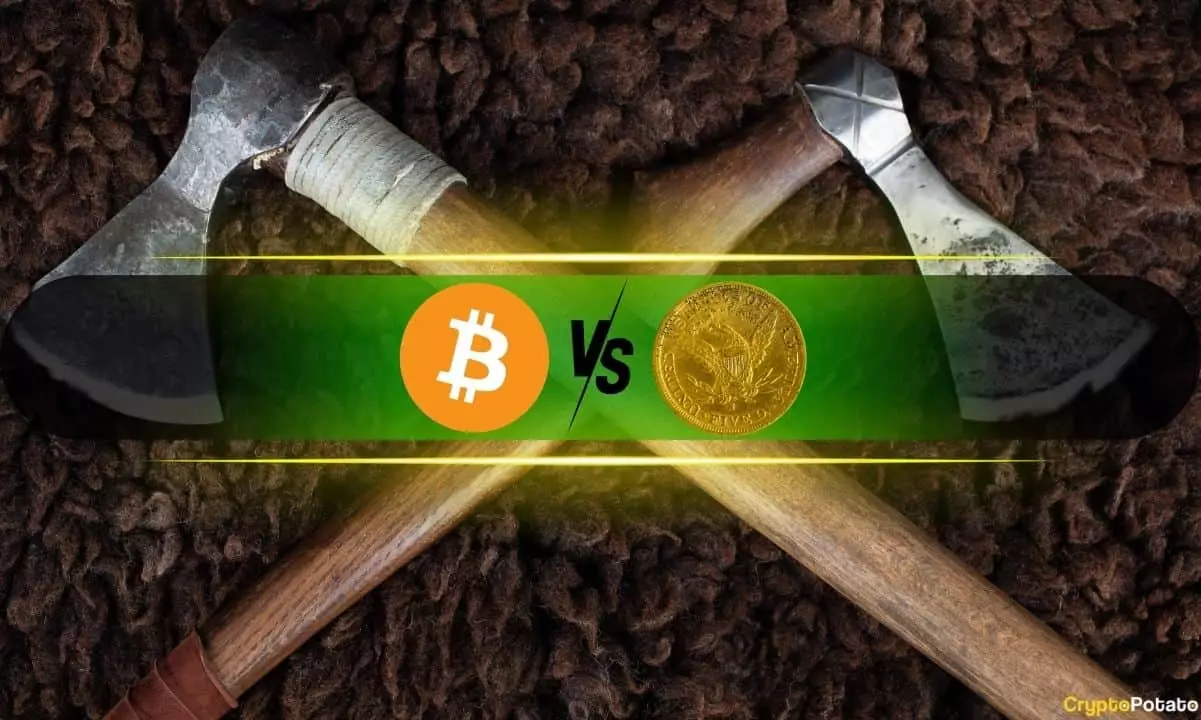In an environment where traditional safe havens and equity markets are soaring to unprecedented heights, Bitcoin’s uncharacteristic dormancy raises alarm bells for skeptics and enthusiasts alike. Gold, the venerable store of value, surpassing a staggering $3,697, and silver, climbing over 41%, are clear indicators that investors still trust tangible assets to safeguard their wealth. Meanwhile, major stock indices like the S&P 500 and NASDAQ reach record levels, portraying an optimism that seemingly contradicts Bitcoin’s failure to mirror this ascent. This divergence highlights a fundamental question: why does the pioneer cryptocurrency lag behind when the macroeconomic environment appears conducive to its narrative?
The traditional narrative posits Bitcoin as “digital gold”—a hedge against inflation and political instability. Yet, its current price action suggests it might be losing its luster as a safe haven, revealing internal vulnerabilities that threaten its long-term viability. The wide-ranging market dynamics—marked by a weak dollar, ongoing geopolitical tensions, and mounting sovereign debts—should, in theory, bolster Bitcoin. Instead, it sits in a narrow trading band, suggesting internal forces are at play, further complicating its quest for mainstream acknowledgment as a resilient store of value.
Internal Market Fundamentals: A Long-Term Dilemma
Market analysts have highlighted that Bitcoin’s stagnation isn’t solely a consequence of macro trends but primarily rooted in the asset’s internal ecosystem. Recent data shows approximately 230,000 BTC sold by long-term holders in just the past month, a clear indication of profit-taking or an act of caution by the most entrenched investors. This persistent selling pressure creates a formidable barrier for new demand to spark a sustained rally. The result is a cryptocurrency that remains ensnared in a sideways channel, displaying neither the exuberance nor the decline that might confirm a decisive trend reversal.
This internal imbalance signals a critical fragility in Bitcoin’s foundation, where the willingness of holders to offload assets can overshadow macroeconomic tailwinds. While the narrative of Bitcoin as “digital gold” suggests it should flourish during turbulent economic times, current price behavior suggests that the market still perceives significant risks—risks that outweigh its benefits as a store of value. The hesitancy among long-term holders points to unresolved questions about its long-term store of value proposition, especially when internal selling pressures mount at a time of apparent macroeconomic stability.
Upcoming Signals and Long-Term Outlook Predictions
Despite the near-term stagnation, some technical indicators hint at a possible breakout. A rare golden cross on Bitcoin’s daily MACD, paired with a historically favorable MVRV bottom near $107,000, has heightened expectations for a meaningful rally. Historically, similar setups have preceded 30% to 40% rallies, with forecasts speculating a move toward $140,000 or beyond if history repeats. These signals, however, are not guarantees but rather potential signposts in a landscape fraught with uncertainty.
Adding to this optimism is Arthur Hayes’ outlook, which emphasizes macro liquidity rather than asset cycles as the primary driver of Bitcoin’s bull run into the mid-2020s. His forecast of a possible $250,000 target underscores a conviction that Bitcoin’s true strength lies in its resistance to fiat currency debasement and the long-term macroeconomic disorder that is yet to fully unfold. Yet, this long-term optimism coexists with a brutal acknowledgment of the present: until the selling pressure from long-term holders diminishes and fresh demand enters the market, Bitcoin’s sideways trend may persist, dampening its potential to act as a genuine safe haven in the current global climate.
The Central Question: Can Bitcoin Overcome Internal Weaknesses?
From a center-right perspective, advocating for a prudent yet optimistic view of market assets, Bitcoin’s current predicament reflects deeper systemic issues. Its failure to rally alongside other risk assets might be a warning sign that its internal ecosystem is not yet robust enough to sustain a growth trajectory. Rather than a failure of macroeconomic conditions, it could be a fundamental signal that Bitcoin cannot yet fulfill its promise as a reliable hedge against financial instability.
The ongoing internal liquidation by long-term holders signals a crucial need for renewed confidence. Until new demand can absorb this perpetual sell-off, the cryptocurrency’s future as a “digital gold” will remain uncertain. Investors, especially those aligned with conservative principles of fiscal responsibility and market stability, should remain cautious about ascribing too much security to a digital asset still struggling with internal consistency. Its role as a non-sovereign store of value is promising, but the internal dynamics suggest it is not yet the safe haven it claims to be—merely an asset still fighting internal doubts and external pressures.

